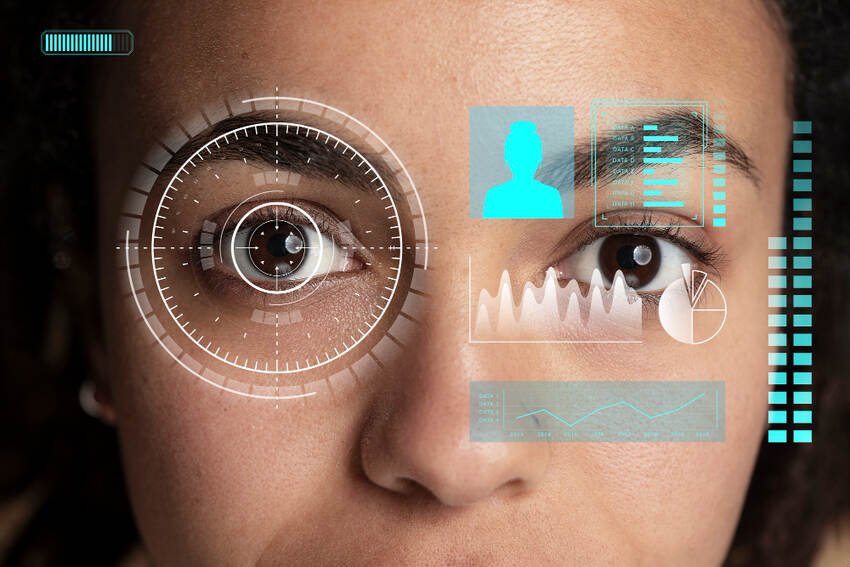In 2025, the conversation around public safety has never been more urgent. Gun violence is escalating at a pace that alarms both policymakers and citizens. As of August 2025, the U.S. has experienced over 450 mass shootings, according to the Gun Violence Archive, a shocking indicator of the scale of the crisis.
In this environment, traditional security methods like metal detectors, security guards, and manual video surveillance are no longer enough. The challenge is clear: how do we identify and neutralize gun-related threats before shots are fired?
The answer lies in the transformative potential of AI-powered gun detection systems cutting-edge surveillance technologies designed to identify firearms in real time using computer vision and machine learning.
Let’s explore how these systems work, where they’re being used, and why they’re changing the future of public safety.
What Are AI-Powered Gun Detection Systems?
AI gun detection systems are software solutions that use artificial intelligence to analyze live video footage for the presence of firearms. By training machine learning models on thousands of gun images and video data, these systems can recognize pistols, rifles, and shotguns even when they’re partially concealed or quickly flashed.
These systems don’t just detect weapons. Many also assess intent, such as whether someone is simply carrying a holstered firearm or actively raising a weapon in a threatening manner. Based on this context, they issue instant alerts to law enforcement or on-site security teams.
This means instead of reacting after a gun is fired, response teams can act before a tragedy occurs.
How Do These Systems Actually Work?
AI-powered detection relies on a combination of deep learning, computer vision, and real-time video analytics. Here’s a simplified breakdown of the process:
- Camera Input: The system continuously monitors live feeds from existing security cameras.
- Object Recognition: It scans each frame for the shape and visual patterns of firearms.
- Classification: If a gun is identified, the AI classifies the weapon type and estimates threat level based on behavior.
- Instant Alerts: Within seconds, alerts are sent to relevant authorities or security personnel, often including image snapshots or video clips.
- Response Activation: The system can trigger alarms, lock doors, or notify first responders based on pre-set protocols.
Many systems use edge computing, processing data on-site for faster decision-making. Others are cloud-based, allowing centralized management for multiple locations.
The best part? These tools don’t require new hardware they integrate with existing CCTV infrastructure.
Top Companies Driving Innovation
Several companies are leading the charge in AI-based gun detection:
- Coram AI – A rising player in the space, Coram leverages advanced computer vision and deep learning to deliver real-time gun detection tailored for high-risk environments like schools, malls, and transit hubs.
- ZeroEyes – Founded by former Navy SEALs, this company specializes in military-grade surveillance tech for schools and public spaces.
- Omnilert – Focuses on proactive emergency notification systems integrated with AI gun detection.
- Athena Security – Offers multi-threat detection for weapons, fires, and violent behavior, mainly for hospitals and retail spaces.
- Patriot One – Known for weapon detection without line-of-sight using radar and AI fusion models.
These companies are pushing the envelope, making AI surveillance smarter, faster, and more context-aware.
Real-World Use Cases of AI Gun Detection
1. Schools and Universities
With school shootings making global headlines far too often, AI gun detection is being deployed across educational campuses. Systems like ZeroEyes and Omnilert are now being used in U.S. school districts to monitor hallways, entrances, and parking lots.
In 2024, a Pennsylvania high school avoided a potentially deadly incident when an AI system flagged a weapon outside the building before the suspect could enter. Security was able to respond in real time, preventing harm to students and staff.
2. Public Transportation Hubs
Subway systems and bus stations, especially in major cities like New York and Chicago, are turning to AI to improve passenger safety. AI can monitor high-traffic areas for visible firearms and send instant alerts without disrupting commuter flow.
This makes AI ideal for urban environments, where traditional metal detectors or pat-downs aren’t practical.
3. Entertainment and Sports Venues
Large events concerts, sports games, festivals are vulnerable targets for mass shootings. AI systems installed in stadiums and arenas offer a discrete way to detect threats without slowing down entry lines or requiring invasive screening methods.
When paired with crowd analytics and behavioral monitoring, AI can identify not just weapons but also erratic or aggressive movements.
4. Government and Corporate Buildings
Courthouses, municipal buildings, and corporate HQs are investing in AI-powered surveillance to protect employees and visitors. These systems act as a proactive layer of defense, capable of identifying threats before they breach security perimeters.
Key Benefits of AI Gun Detection Systems
Rapid Response
The most critical benefit is speed. AI can detect a visible weapon and alert authorities within 1-3 seconds, giving responders a head start before the first shot is fired.
Non-Invasive Monitoring
Unlike manual bag checks or pat-downs, AI works passively and continuously. There’s no disruption to public flow, making it ideal for high-traffic environments.
Continuous Learning and Accuracy
Machine learning models improve over time. With enough training data, these systems can distinguish between real threats and false positives reducing unnecessary alarms and focusing attention where it matters.
Situational Awareness
AI doesn’t just detect weapons; some systems also analyze movement, posture, and behavior. For example, sudden rapid movement combined with weapon visibility may be flagged as a high-priority threat.
Challenges and Ethical Considerations
Despite their promise, AI gun detection systems aren’t without controversy or limitations.
Privacy Concerns
Constant surveillance raises valid concerns about data privacy and individual freedoms. It’s crucial that these systems are deployed transparently, with clear rules around data usage and retention.
Accuracy and Bias
AI is only as good as the data it’s trained on. If the training set lacks diversity, the system may underperform with certain skin tones, clothing styles, or backgrounds leading to false negatives or unfair profiling.
Over-Reliance on Automation
Security teams should not fully rely on AI to make life-or-death decisions. These tools must be viewed as a supplement to human judgment, not a replacement.
The Future of AI Gun Detection
The future of this technology is evolving rapidly. Several trends are set to shape the next generation of public safety tools:
- Multimodal Detection: Combining AI visual detection with audio (gunshot detection) and motion analysis for a more holistic threat response.
- Drone Integration: Drones equipped with AI cameras could monitor large areas like campuses or concerts from above in real time.
- Federated Learning: Allows AI models to learn from multiple sources without sharing raw footage improving privacy and accuracy simultaneously.
- Automatic Law Enforcement Dispatch: Seamless integration with 911 systems could reduce human lag in emergency response.
The bottom line: AI won’t just help detect threats. It will help prevent them.
Key Takeaways
- AI-powered gun detection is transforming public safety with real-time, intelligent monitoring.
- These systems are already being used in schools, transit hubs, stadiums, and government buildings.
- Key benefits include speed, accuracy, and non-invasive monitoring, making them ideal for modern environments.
- Challenges around privacy, bias, and over-reliance must be actively addressed to ensure ethical deployment.
- The market is growing fast, and the next few years will bring more powerful, integrated solutions that blend AI, behavioral analysis, and automation.
Frequently Asked Questions
How accurate are AI gun detection systems?
Most advanced systems report 95% or higher accuracy, especially in controlled environments. However, results may vary based on lighting, camera quality, and environmental complexity.
Can these systems detect concealed weapons?
Current AI systems primarily detect visible firearms. However, some companies are exploring radar, thermal imaging, and other technologies to spot concealed weapons.
Are these systems legal to use in public spaces?
Generally yes especially in spaces where surveillance is already in place. However, usage must comply with local privacy and surveillance laws.
Do these systems replace the need for security personnel?
No. AI systems augment, not replace, human security teams. They provide faster alerts and better data, but decision-making still requires human oversight.
Final Thoughts
Gun violence is one of the most urgent public safety challenges of our time. AI-powered gun detection systems offer a bold, innovative solution one that shifts us from reaction to prevention.
With proper oversight, transparent deployment, and continuous improvement, these systems can become a cornerstone of smarter, safer communities.
The future of public safety isn’t just about more cameras. It’s about smarter technology that protects people before tragedy strikes.
Read Dive is a leading technology blog focusing on different domains like Blockchain, AI, Chatbot, Fintech, Health Tech, Software Development and Testing. For guest blogging, please feel free to contact at readdive@gmail.com.





